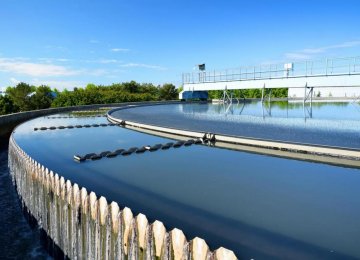Iran and Australia signed a memorandum of understanding on optimization of water consumption and water resource management in Tehran on Wednesday.
Energy Minister Hamid Chitchian and Steven Michele Ciobo, Australia’s trade, tourism and investment minister, attended the ceremony in which the MoU was signed, IRNA reported.
According to Chitchian, bilateral water and energy cooperation cannot expand unless both the government and the private sector take effective steps to play a key role in this regard.
Commenting on similarities between the two country’s climate, the official noted that some parts of Australia suffer from the same water crisis that Iran has been tackling for such a long time, which explains why exchange of experience can help both to come up with more efficient alternatives to address the ever-growing challenge.
Chitchian believes that sharing the knowhow on efficient water resource management is beyond typical business interactions, as it can be done for humanitarian purposes.
“Due to the steady rise in temperature, 30% of Iran renewable water evaporate, that is why upgrading water resource optimization technology tops the country’s priority list,” he said.
“Providing people with potable water is not the ministry’s sole aim, yet the quality of water is vital and plans have been made to fulfill the goal by employing state-of-the-art technology.”
Underscoring the low quality of water in some regions as it contain nitrate above the permissible levels, Chitchian said, “Outdated water treatment techniques incur high costs, which can be easily avoided if they are replaced with the cutting-edge ones.”
Ali Asqar Qane’, the National Water and Wastewater Engineering Company of Iran’s planning and development deputy, said last month the supply of drinking water costs 10,000 rials (around 28 cents) per cubic meter in urban areas and 12,000 rials (34 cents) in the rural parts of the country.
“However, water is sold at 4,000 rials (11 cents) and 1,000 rials (around 3 cents) in urban and rural areas respectively,” he added.
Iran’s water crisis has compelled the government and water authorities to devise costly plans to help mitigate its impacts. Official reports say nearly 5,000 villages across the country are struggling with varying degrees of water scarcity.
According to the Energy Ministry, two-thirds of Iran are dry, precipitation has fallen to one-third of global average and climate change has adversely affected the intensity and periods of rainfall in the country, which is situated in one of the world’s most water-stressed regions.
Iran’s water problem has been brewing for years. In a country that only gets about one-third of the world’s average rainfall and most of it on just 25% of its surface, balancing supply and demand is a challenging task.
With a population that has nearly doubled over the past 20 years, millions have poured into cities, forcing water management authorities to exponentially ramp up both their storage and delivery capabilities to redistribute huge amounts of water from local sources to urban centers where over 70% of the total population reside.










